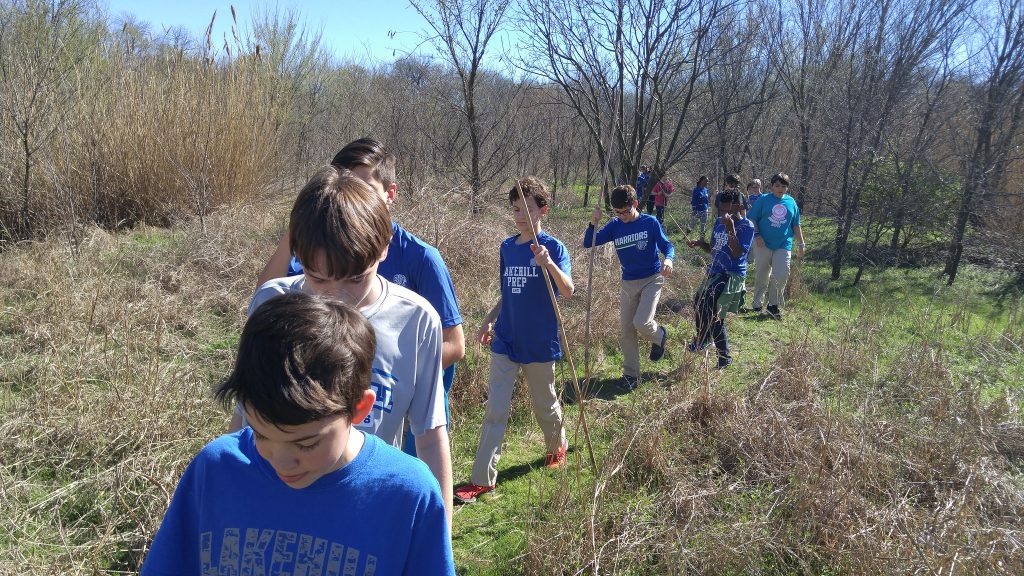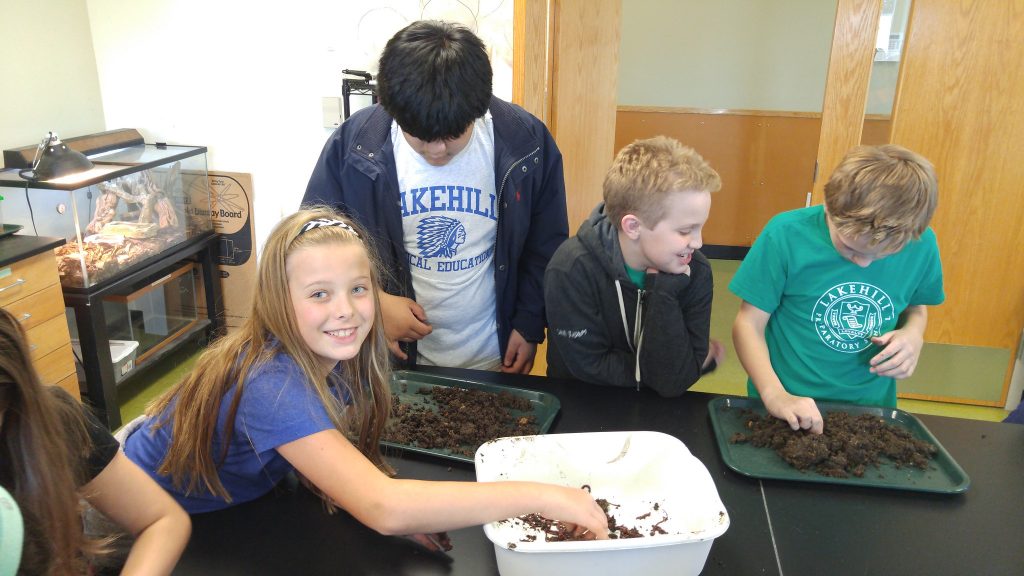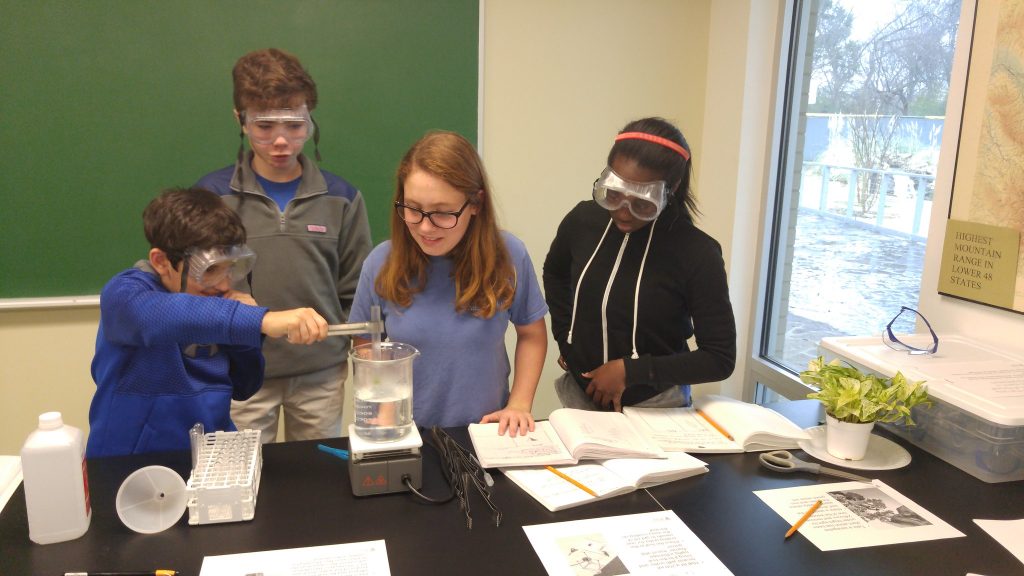By Daniel Bracken
Lakehill Preparatory School, Director of Environmental Education
This term, kindergarten students learned about animal movement. They played a game where they acted out and guessed the different types of animal movements. They studied feathers, animal tracks, snake skins, and silicone fish to investigate the different ways that animals move. They also handled red wiggler worms from the ESC worm farms to feel how the worms are able to slide through soil.
First grade learned about different bird habitats. They observed nests from the ESC collection, and learned about some of the largest, oldest, heaviest, and most intricate nests that birds can make. the classes used cardboard drink containers to create bird houses to take home.
Second grade studied how the form of insects’ legs affects their movement. They observed insect specimens which had jumping, swimming, running, and killing legs. They also made pitfall traps in the forest at the ESC. The students will check their traps on their next visit and add any insects that are collected to the ESC insect collection.
Third grade observed the results from their plant maze experiments. They saw how plants can wind their way around the walls of a maze to reach light. They also learned about the chloroplasts in the aquatic plants from the ESC aquarium. They were able to see that the green pigment of plants comes from these little green blobs. They also helped to replant the garden with brussels sprouts and kohlrabi.
Fourth grade investigated tree seeds and cones as a method of identifying different types of trees. They identified the type of seeds that beans, dates, peas, junipers, red buds, and avocados have. After determining what type of seed each plant had, they had to conclude how that seed could be dispersed. The fourth graders also observed how much their avocado seedlings had grown.
Fifth grade learned about regular composting and vermicomposting (worm composting), using their knowledge about soil nutrients from their previous visit to evaluate the value of the earth worm castings from the ESC worm farm. They observed how nutrient rich the soil from the worm farms is and helped to harvest the castings, building a new home for the red wigglers. The worm castings were also used in the Little Sprouts Garden before the third grade completed their spring planting.
Sixth grade brought tap water from their homes and tested its water quality for pH, iron, copper, hardness, and chlorine. They also learned about the potential risks of having acidic, basic, or hard water, or having high levels of metals.
Seventh grade created QR codes for the trees which they had identified on a previous visit. The QR codes will have information such as tree species and GPS coordinates that will be hung on the trees. The codes can be scanned to reveal the information to other students and visitors. The students also conducted an experiment on variegated plants that revealed that not only do the white parts of plants not have chloroplasts, but they are also unable to produce and store sugar as starch in those areas of the leaf. They removed the green color from variegated plants using alcohol and used iodine to stain starches. They observed how stained starch replicated the original pattern of the variegated leaf.
Eighth grade tested the efficiency of their solar houses. They used the results of the experiment to determine how to better build a solar house that would keep the house cooler in the summer, warmer in the winter, and provide solar power throughout the year. They also observed how solar energy can be used to create movement by investigating radiometers and solar balloons.
See more pictures from the ESC.
For more information about Lakehill Preparatory School, visit lakehillprep.org.

